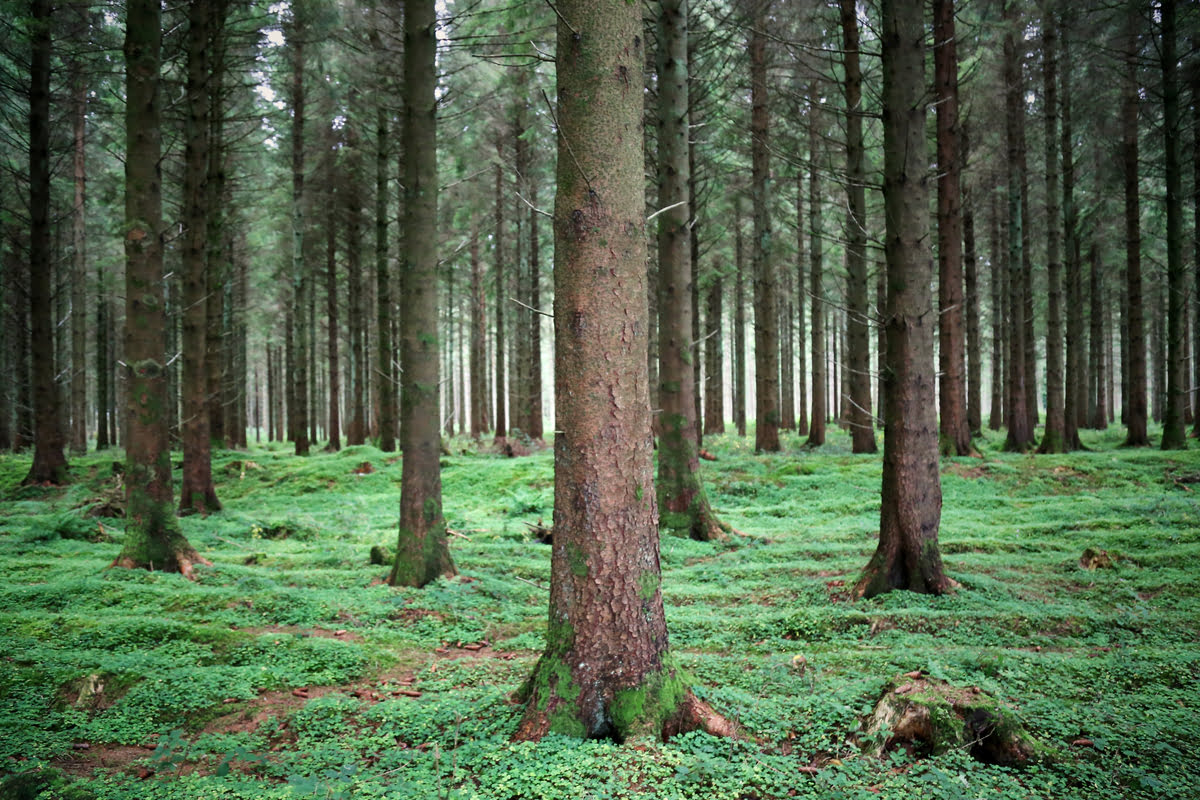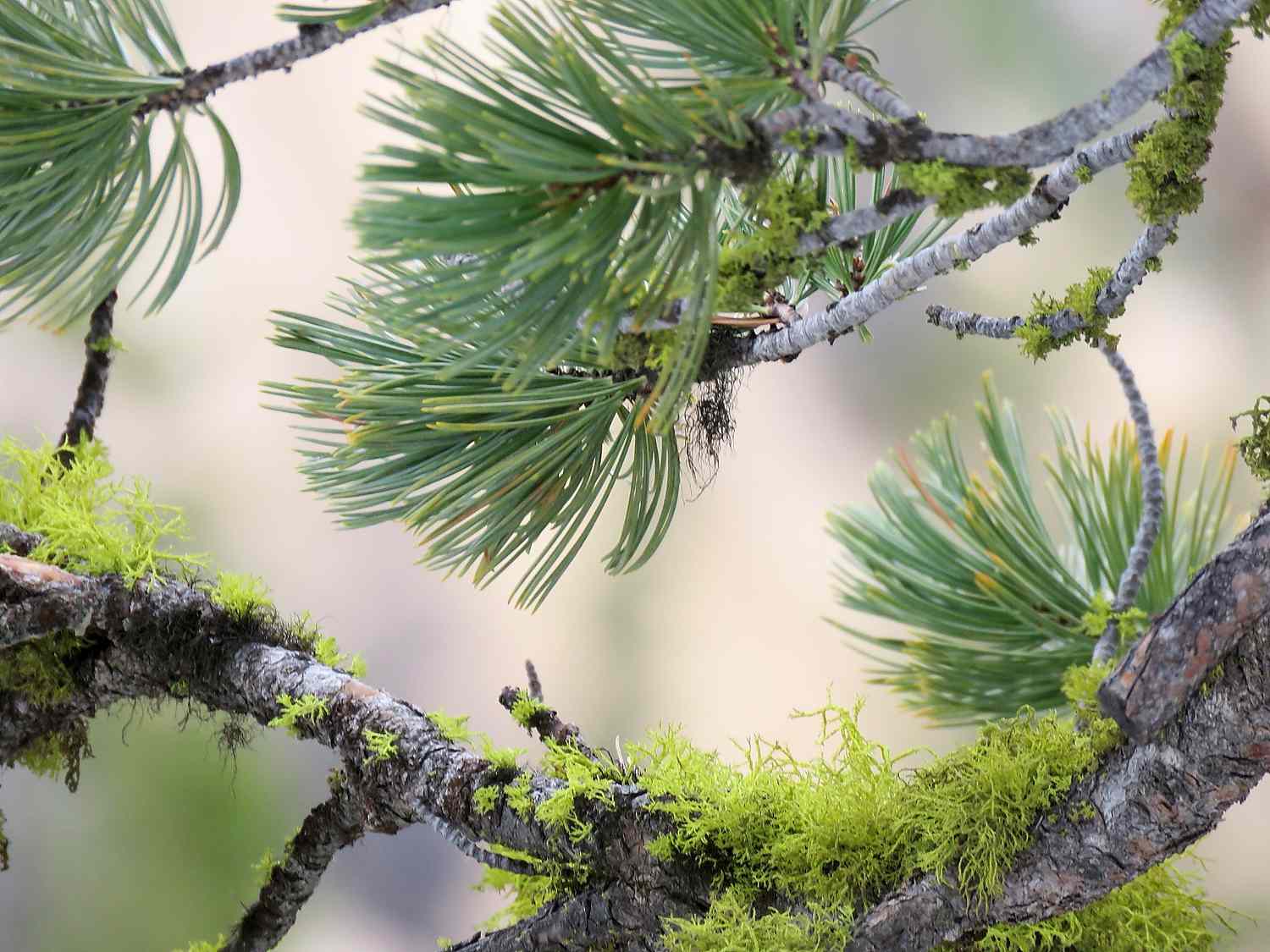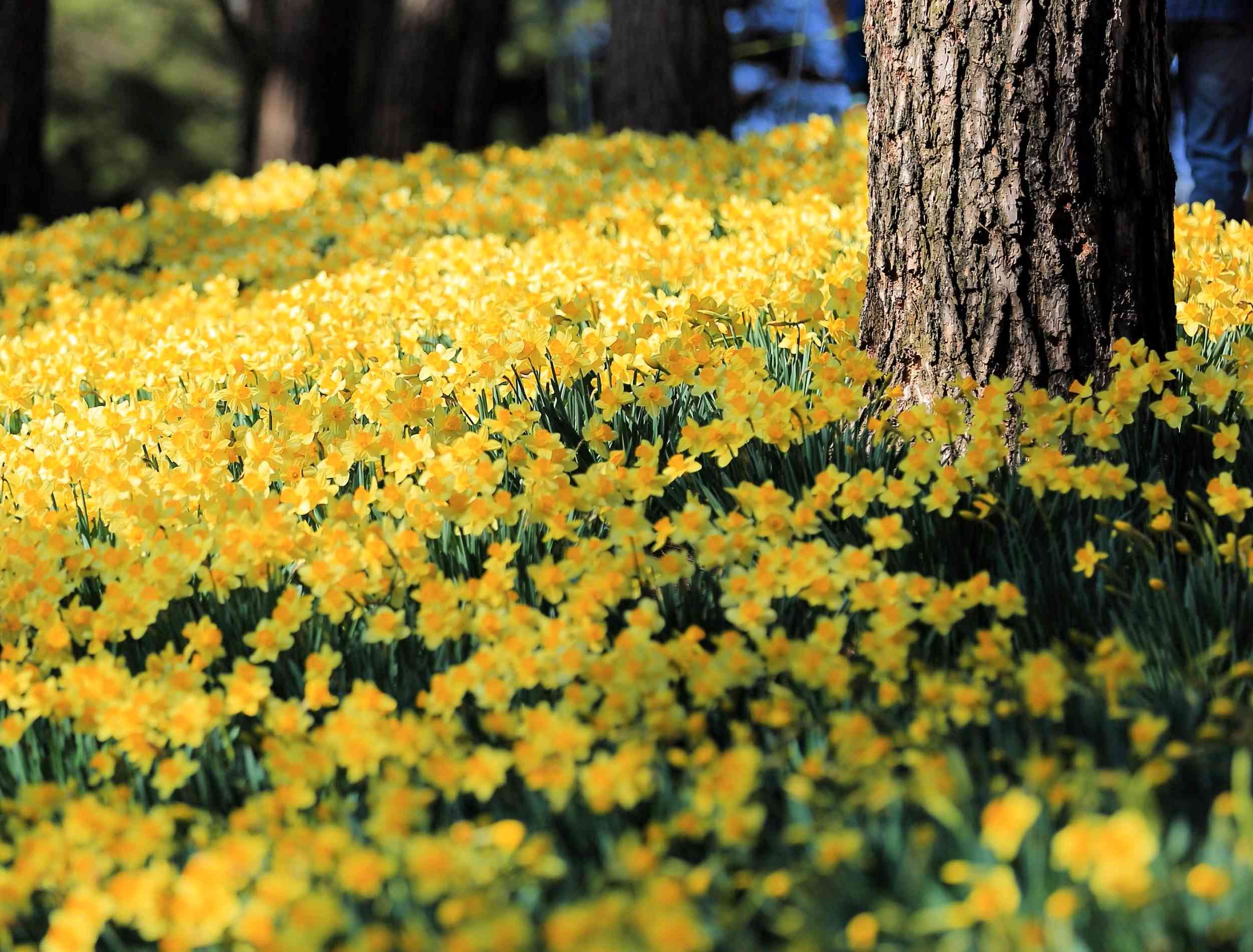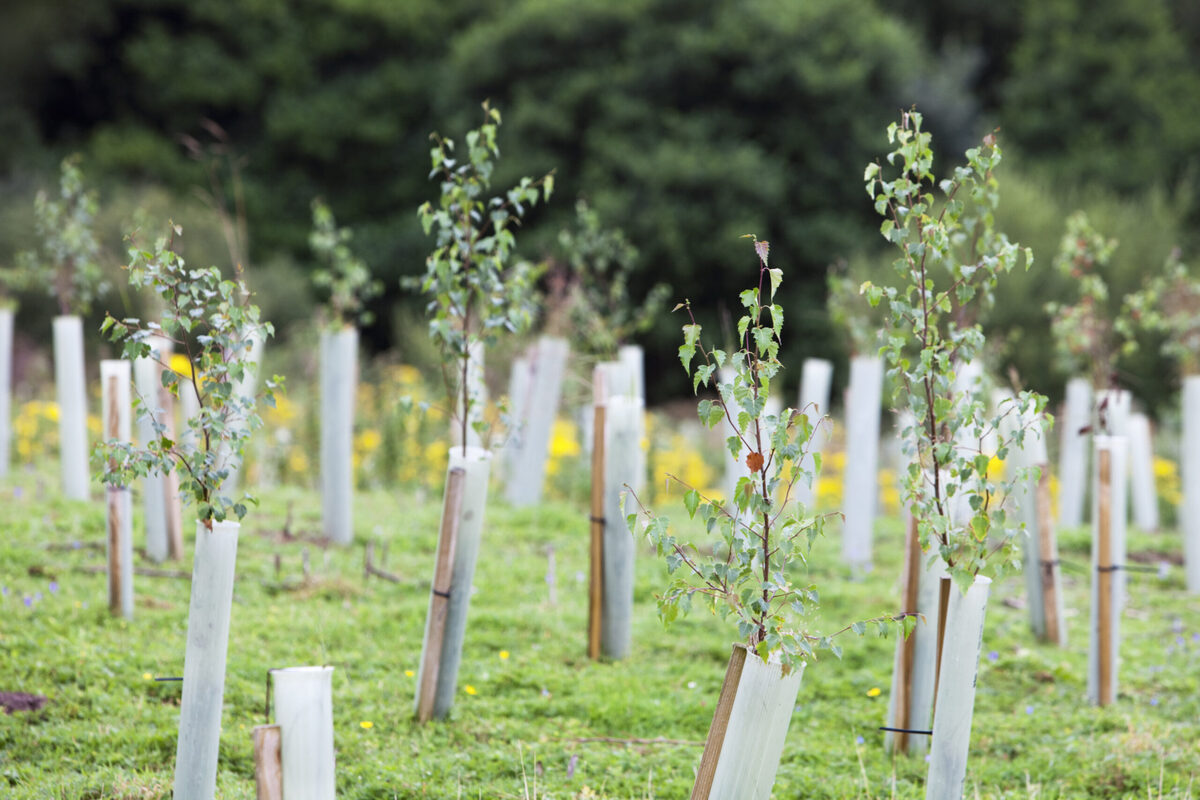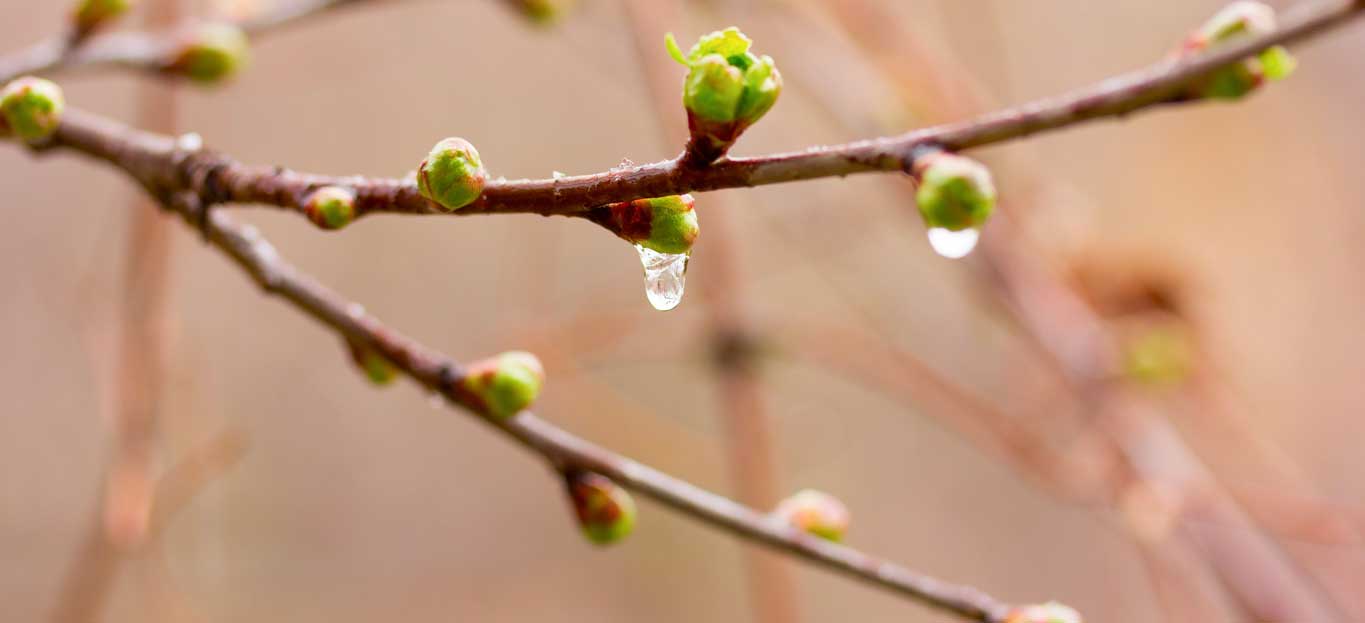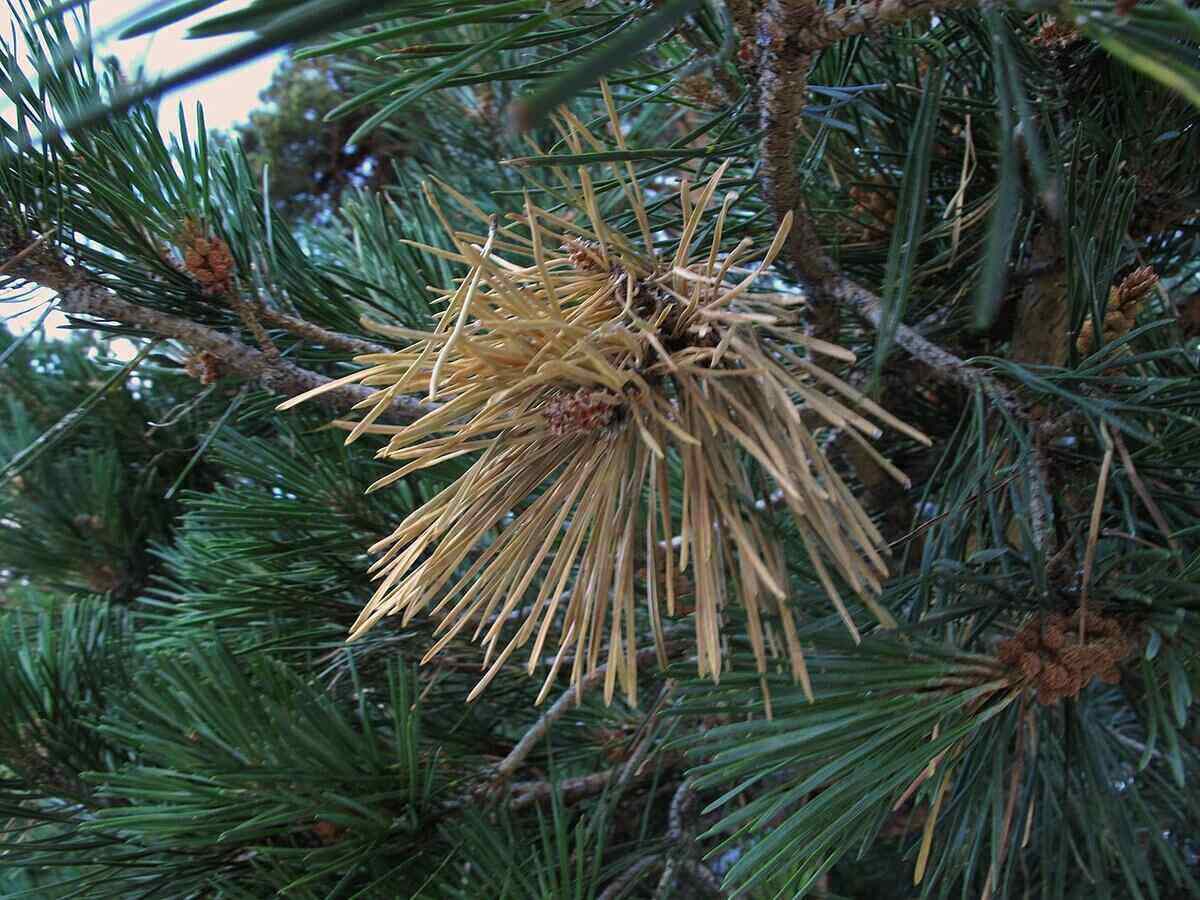Home>Types of Gardening>Ornamental Gardening>When Do Pine Trees Release Pollen


Ornamental Gardening
When Do Pine Trees Release Pollen
Published: November 7, 2023
Discover the optimal time of year when pine trees release pollen for your ornamental gardening needs. Plan and prepare for a successful and allergy-free gardening season.
(Many of the links in this article redirect to a specific reviewed product. Your purchase of these products through affiliate links helps to generate commission for Chicagolandgardening.com, at no extra cost. Learn more)
Table of Contents
Introduction
Ornamental gardening is a multifaceted and enriching hobby that allows individuals to create stunning landscapes and vibrant outdoor spaces. Whether you have a sprawling garden or a small balcony, cultivating ornamental plants can bring joy, beauty, and a sense of accomplishment. One particular aspect of ornamental gardening that often captures the attention of enthusiasts is the use of decorative plants to enhance visual appeal.
One such plant that plays a significant role in ornamental gardening is the pine tree. These majestic evergreens are not only valued for their tall and graceful stature, but they also contribute to the overall aesthetic of a garden through their lush foliage and unique cones. However, pine trees have a lesser-known characteristic that can create both fascination and irritation among gardeners and nature enthusiasts alike – the release of pollen.
Pollen is a vital component of plant reproduction, allowing plants to fertilize and produce seeds. It plays a crucial role in the ecosystem, serving as a food source for many insects and animals. However, for individuals with respiratory allergies, the release of pollen can cause unpleasant symptoms and discomfort. Understanding when pine trees release pollen and the factors that influence this process can help gardeners and allergy sufferers alike manage their gardening activities and minimize the impact of pollen in the environment.
In this article, we will explore the fascinating world of pine tree pollen, its production, and the factors that influence its release. We will also delve into the seasonal timing of pine tree pollen release and its potential health impacts on susceptible individuals. Lastly, we will discuss some strategies for managing pine tree pollen allergies, ensuring that both gardeners and allergy sufferers can enjoy the beauty of ornamental gardening while minimizing any adverse effects.
What is pollen?
Pollen is a powdery substance produced by the male reproductive organs of plants, known as stamens. It is a crucial element in the process of plant reproduction, allowing for the transfer of genetic material from the male to the female parts of the plant. This transfer of pollen is essential for the fertilization of the plant’s ovules and the production of seeds.
Pollen grains are tiny structures, typically ranging in size from 10 to 100 micrometers. They are composed of a protective outer coating called the exine, which helps to shield the genetic material inside. Inside the exine, there is a living part of the pollen grain called the cytoplasm, which contains the male gametes.
Pollen can be produced by a wide variety of plants, including trees, flowers, grasses, and shrubs. The size, shape, and color of pollen grains can vary significantly depending on the plant species. Some pollen grains are smooth and rounded, while others are spiky or elongated. Additionally, pollen can come in a range of colors, from yellow and orange to brown and even purple.
Though often associated with causing allergies, pollen serves an essential role in the ecosystem. It is a vital food source for many insects, such as bees and butterflies, which collect pollen to feed their larvae. Pollen also plays a crucial role in the reproductive cycle of plants, facilitating cross-pollination and genetic diversity.
For allergy sufferers, pollen can be a concern, as it can trigger reactions in individuals with pollen allergies, also known as hay fever or allergic rhinitis. The symptoms of pollen allergies can include sneezing, itchy and watery eyes, nasal congestion, and throat irritation. However, it is important to note that not all pollen is allergenic, and the specific plants that cause allergies can vary depending on the region and the individual’s sensitivities.
Now that we have a basic understanding of what pollen is and its importance in the natural world, let us delve into the specific aspects of pine tree pollen production and release.
Pine trees and pollen production
Pine trees, belonging to the genus Pinus, are known for their tall and majestic stature, with their evergreen foliage providing year-round visual interest in gardens and landscapes. These iconic trees also play a significant role in pollen production due to their unique reproductive structures.
Unlike many flowering plants that produce flowers with both male and female reproductive organs, pine trees have separate male and female structures. The male reproductive organs, known as stamens, are responsible for producing pollen. Each stamen consists of two parts – the filament and the anther. The anther is where the pollen grains are produced and stored.
Pine tree pollen is produced in abundance, with each pine tree capable of producing millions of pollen grains. The appearance of pine tree pollen depends on the specific species, but it is typically yellow or brown in color. The shape of pine tree pollen varies, with some species producing more rounded pollen grains and others producing elongated or triangular-shaped grains.
Pine trees are classified as wind-pollinated plants, meaning that they rely on the wind to carry their pollen from the male reproductive organs to the female reproductive structures. Because they are not dependent on insects or other animals for pollination, they do not produce showy flowers or nectar that would attract pollinators.
Instead, pine trees release large quantities of lightweight pollen into the air, allowing it to be dispersed over long distances by the wind. The small size and aerodynamic shape of pine tree pollen grains facilitate their transport through the air, increasing the chances of reaching receptive female pine cones for fertilization.
Pine tree pollen production typically occurs during the spring season when the trees are actively growing and preparing for reproduction. The exact timing of pollen release can vary between different pine species and can also be influenced by environmental factors such as temperature and sunlight.
Understanding the factors that affect pine tree pollen release is crucial for gardeners and individuals with allergies. By monitoring the timing of pollen release, they can plan their gardening activities or take necessary precautions to minimize exposure and manage any potential allergic reactions.
Now that we have explored the fascinating world of pine tree pollen production, let us delve into the factors that can influence when and how pine trees release their pollen.
Factors affecting pine tree pollen release
Several factors can influence the timing and intensity of pine tree pollen release. Understanding these factors can help individuals anticipate and prepare for the peak pollen season. Here are some key factors that affect pine tree pollen release:
Temperature: Pine tree pollen release is often triggered by warmer temperatures. As the weather warms up in spring, the pine trees respond by initiating their reproductive processes, including the production and release of pollen. However, extreme temperature fluctuations, such as unseasonably warm or cold spells, can disrupt the timing of pollen release.
Daylight duration: Pine trees are also sensitive to changes in daylight duration. Longer daylight hours signal the trees that it is time to start their reproductive cycle, leading to the release of pollen. As the days gradually become longer in the spring, the pine trees respond accordingly.
Precipitation: Adequate moisture is essential for pine tree pollen release. A dry spell can delay or reduce pollen production, while a sudden influx of heavy rain can wash away the pollen before it has a chance to be dispersed. Moderate rainfall, on the other hand, can contribute to optimal pollen release.
Wind: Wind plays a vital role in the dispersal of pine tree pollen. A gentle breeze aids in carrying the pollen grains away from the tree, increasing the likelihood of successful pollination. However, excessively strong winds can disrupt the dispersal process or disperse the pollen too far away from receptive female cones.
Tree health: The overall health and vigor of the pine tree can impact pollen production. Trees that are stressed or unhealthy may produce less pollen or have reduced fertility. Factors such as diseases, infestations, nutrient deficiencies, or drought can affect the tree’s reproductive capabilities.
Geographical location: The geographical location can also influence the timing and intensity of pine tree pollen release. Different pine species have specific ranges and habitats, and their pollen release may align with the local climate and environmental conditions of that region.
It is important to note that these factors can interact with one another, creating complex interactions that determine the precise timing and intensity of pine tree pollen release. Monitoring these influencing factors can help gardeners, horticulturists, and allergy sufferers plan and manage their activities accordingly.
Now that we understand the factors that affect pine tree pollen release, let us explore when these pollen grains are most likely to be released into the environment.
Seasonal timing of pine tree pollen release
The timing of pine tree pollen release can vary depending on the specific species of pine tree, geographical location, and prevailing environmental conditions. While pine trees commonly release pollen in the spring season, the exact timing can differ between regions and even within the same species. Here, we explore the general seasonal timing of pine tree pollen release:
Spring: Spring is typically the main season for pine tree pollen release. As the weather warms up and days become longer, pine trees enter their reproductive phase. This is when the male pine cones, located at the ends of branches, begin to produce and release an abundance of pollen. Early spring is often marked by pollen being dispersed through the air, which can be visible as a yellow haze in some areas.
Early to mid-summer: Some pine tree species also release pollen during the early to mid-summer months. This secondary pollen release is usually less intense compared to the spring season. It occurs when certain pine species have delayed or extended reproductive cycles. However, the overall pollen count and impact on allergies during this period may be less significant than in the spring.
Regional variations: It’s important to note that pine tree pollen release can vary significantly depending on the geographical region. In regions with milder climates, such as the southern parts of the United States, pine tree pollen release may begin earlier in the year compared to regions with colder climates. Similarly, in colder regions, pollen release may be delayed until late spring or early summer.
It’s worth mentioning that the duration of pine tree pollen release can also vary. Some species may release pollen for a few weeks, while others may have a longer pollen release period spanning several months. Understanding the typical timing of pine tree pollen release in one’s region can help individuals plan outdoor activities and take necessary precautions to minimize exposure to allergens.
In the next section, we will explore the potential health impacts of pine tree pollen for individuals with allergies and how they can manage these allergies effectively.
Health impacts of pine tree pollen
While pine trees are beloved for their beauty and contribution to the environment, the release of pollen can have adverse effects on individuals who suffer from pollen allergies. For these individuals, exposure to pine tree pollen can trigger a range of uncomfortable symptoms. Here are some of the health impacts associated with pine tree pollen:
Allergic rhinitis: Pine tree pollen allergies, also known as allergic rhinitis or hay fever, can cause nasal congestion, sneezing, itching, and a runny nose. These symptoms can be particularly bothersome during the peak pollen season when the pollen count is high.
Asthma exacerbation: Individuals with asthma may experience worsened symptoms, such as coughing, wheezing, and shortness of breath, when exposed to pine tree pollen. Pollen can irritate the airways and trigger asthma attacks in susceptible individuals.
Allergic conjunctivitis: Pine tree pollen can also cause allergic conjunctivitis, leading to redness, itching, watering, and swelling of the eyes. This can make outdoor activities uncomfortable for individuals with pollen allergies, particularly during the spring season.
Skin reactions: In rare cases, direct contact with pine tree pollen can cause skin reactions, such as hives or dermatitis. These reactions may occur when individuals come into contact with pollen-covered surfaces or when they handle pine cones directly.
It’s important to note that the severity of these health impacts can vary among individuals, with some experiencing mild symptoms while others may have more severe allergic reactions. It is always advisable for individuals with known pollen allergies to consult with a healthcare professional for proper diagnosis and management of their symptoms.
Now that we understand the potential health impacts of pine tree pollen, let’s explore some strategies for managing pine tree pollen allergies effectively.
Managing pine tree pollen allergies
While it may be challenging to completely avoid exposure to pine tree pollen, there are various strategies that can help individuals manage their allergies effectively. By implementing these strategies, individuals can minimize symptoms and improve their overall quality of life during the pollen season. Here are some tips for managing pine tree pollen allergies:
Monitor pollen forecasts: Stay informed about local pollen forecasts and plan outdoor activities accordingly. Avoid spending significant time outdoors on days when the pollen count is high, particularly during peak pollen release times in the spring season.
Keep windows closed: To reduce the amount of pollen entering your home, keep windows closed, especially during peak pollen hours. Use air conditioning or consider using allergy-friendly air filters to help remove pollen from indoor air.
Limit outdoor activities: When pollen counts are high, try to limit your time spent outdoors, especially in areas where pine trees are abundant. If you do need to be outside, wearing sunglasses and a hat can help to protect your eyes and hair from direct contact with pollen.
Shower and change clothes: After spending time outdoors during the pollen season, it is advisable to shower and change your clothes to remove any pollen that may have attached to your body or clothing.
Use nasal irrigation: Nasal irrigation with a saline solution can help to flush out irritants, including pollen, from your nasal passages. This can provide temporary relief from nasal congestion and irritation caused by pollen allergies.
Seek allergy medications: Over-the-counter antihistamines, nasal sprays, and eye drops can provide temporary relief from allergy symptoms. Consult with a healthcare professional to determine the most suitable medications and dosage for your specific symptoms.
Allergy shots (immunotherapy): For individuals with severe pine tree pollen allergies, allergy shots may be recommended. These shots expose the individual to small amounts of pollen over time to help reduce the body’s allergic response. Allergy shots are typically administered under the supervision of an allergist.
It’s important to remember that everyone’s allergy triggers and responses can vary. What works for one person may not work for another. Consulting with a healthcare professional or allergist can provide personalized guidance and treatment options tailored to your specific needs.
By implementing these strategies and seeking appropriate medical advice, individuals can effectively manage their pine tree pollen allergies and enjoy the beauty of ornamental gardening without the inconvenience of allergic symptoms.
Conclusion
Pine trees are not only esteemed for their majestic appearance and lush foliage, but they also play a significant role in the release of pollen, which can have both positive and negative impacts. While pollen is vital for the fertilization and reproduction of pine trees, it can also cause discomfort for individuals with allergies.
By understanding the factors that influence pine tree pollen release, such as temperature, daylight duration, precipitation, wind, and tree health, individuals can better anticipate the timing and intensity of pollen in their environment. This knowledge allows gardeners, horticulturists, and allergy sufferers to plan their activities and take necessary precautions to minimize exposure to pollen allergens.
For individuals with pine tree pollen allergies, managing their symptoms is crucial. By monitoring pollen forecasts, keeping windows closed, limiting outdoor activities during high pollen counts, and using nasal irrigation or allergy medications, individuals can alleviate their allergic reactions and improve their overall well-being during the pollen season. Additionally, consulting with healthcare professionals or allergists can provide personalized guidance, including the possibility of allergy shots (immunotherapy).
Pine trees continue to captivate us with their beauty and significance in ornamental gardening. By balancing the benefits of ornamental gardening with proper management of pollen allergies, individuals can enjoy the splendor of these trees without compromising their health or well-being.
So, let us appreciate the grandeur of pine trees, manage our pollen allergies effectively, and take delight in the wonders of ornamental gardening.
